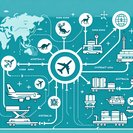
Etihad Airways touched down at Hong Kong International Airport late on 9 November, marking its first scheduled passenger service to the city since the pandemic. The inaugural flight EY 830 carried a delegation led by Chief Revenue & Commercial Officer Arik De, who described Hong Kong as a “critical bridge” between the Gulf and North-East Asia.
At a ceremony on 10 November, Etihad and Hong Kong Airlines signed an expanded commercial cooperation agreement that immediately places Etihad’s “EY” code on Hong Kong – Abu Dhabi sectors and, in return, adds Etihad codes to Hong Kong Airlines’ Japan services to Fukuoka, Sapporo, Osaka and Okinawa. The partners also unveiled fully reciprocal frequent-flyer benefits, allowing Fortune Wings Club and Etihad Guest members to earn and redeem miles across a combined network of more than 120 destinations.
![Etihad launches daily Abu Dhabi–Hong Kong flights and deepens codeshare with Hong Kong Airlines]()
The move signals Etihad’s intent to rebuild its Asian footprint after a three-year pause and gives Hong Kong Airlines—still operating at roughly 75 % of its pre-Covid capacity—direct access to the fast-growing Gulf market without committing additional long-haul capacity. For corporate mobility managers, the one-stop routings via Abu Dhabi offer a new option to reach Africa and the Middle East while keeping travel within the oneworld/Etihad partner ecosystem.
Practical implications include through-checked baggage, single PNR ticketing, and lounge reciprocity at both Abu Dhabi’s new Terminal A and Hong Kong’s Midfield Concourse. Travel-management companies (TMCs) report that corporate fares filed under the new codeshare are roughly 5-8 % lower than comparable interline options, creating immediate cost-savings for regional assignment rotations.
Immigration-wise, UAE nationals already enjoy 30-day visa-free access to Hong Kong, while HKSAR passport holders receive free-of-charge visas on arrival in the UAE—an alignment that further smooths talent mobility between the two hubs.
At a ceremony on 10 November, Etihad and Hong Kong Airlines signed an expanded commercial cooperation agreement that immediately places Etihad’s “EY” code on Hong Kong – Abu Dhabi sectors and, in return, adds Etihad codes to Hong Kong Airlines’ Japan services to Fukuoka, Sapporo, Osaka and Okinawa. The partners also unveiled fully reciprocal frequent-flyer benefits, allowing Fortune Wings Club and Etihad Guest members to earn and redeem miles across a combined network of more than 120 destinations.

The move signals Etihad’s intent to rebuild its Asian footprint after a three-year pause and gives Hong Kong Airlines—still operating at roughly 75 % of its pre-Covid capacity—direct access to the fast-growing Gulf market without committing additional long-haul capacity. For corporate mobility managers, the one-stop routings via Abu Dhabi offer a new option to reach Africa and the Middle East while keeping travel within the oneworld/Etihad partner ecosystem.
Practical implications include through-checked baggage, single PNR ticketing, and lounge reciprocity at both Abu Dhabi’s new Terminal A and Hong Kong’s Midfield Concourse. Travel-management companies (TMCs) report that corporate fares filed under the new codeshare are roughly 5-8 % lower than comparable interline options, creating immediate cost-savings for regional assignment rotations.
Immigration-wise, UAE nationals already enjoy 30-day visa-free access to Hong Kong, while HKSAR passport holders receive free-of-charge visas on arrival in the UAE—an alignment that further smooths talent mobility between the two hubs.





